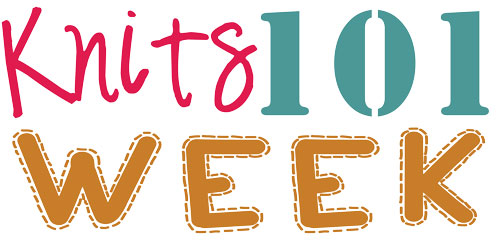
NEEDLES
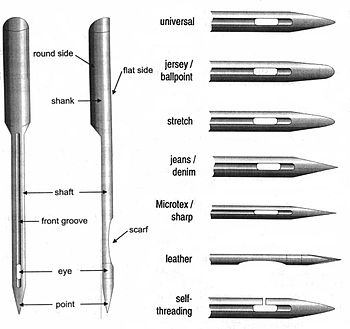
Whether you use a regular sewing machine, serger or cover stitch machine needle choice is important. There are a lot of different types of needle points, you can find more detailed information about them in this Threads article. Using the wrong type of needle will often cause small pin holes at the seam of knits.
Most people have universal needles in their machines. These are a slightly rounded sharp needle that is compatible with ‘most fabrics’. While these do work on some knits without issues, like sharps they are designed for tight weaves like denim and actually cut through the threads of the fabric leaving a small hole. With the stretch of knits this will easily stretch into a bigger hole with wear.
For knits you want to use a ballpoint needle. You will find variations call jersey and stretch needles that vary in width. You can and should find ballpoint needles for sergers, cover stitch and embroidery machines as well if using them for knits. They also sell twin needles that are ballpoint/stretch. The reason why ballpoint needles work better for knits is because the slightly rounded point allows the needle to slight BETWEEN the fibers/threads instead of making holes.
THREAD
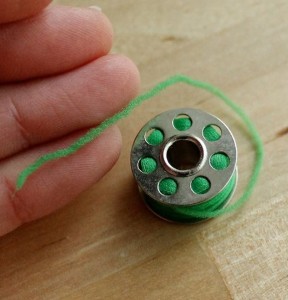
Just like needles there are a LOT of options for thread. You generally can’t go wrong with an all purpose polyester thread. I know cotton often sounds better, but cotton is best suited for quilting not clothing, which is what knits are generally used for. Cotton thread does no stretch and is not strong, seams sewn with cotton on knit fabric will generally break easily. Polyester thread is stronger and has a little more natural give. While I prefer Gutermann, any brand will work.
Wooly Nylon and Stretch Thread. Over the last 5 years it has become much easier to find nylon stretch threads such as Wooly Nylon & Maxi-Lock Stretch. These are NOT to be confused with elastic thread, elastic thread is like the strap on birthday hats, and is just that elastic. Bulky nylon threads are made of a super soft nylon that stretches well. When relaxed it has a fluffy yarn like appearance, but when stretched it looks like regular polyester thread! My favorite place to purchase Maxi Lock Stretch (and well, a lot of my notions, including zippers!) is Wawak.com, they have an amazing selection, good prices, frequent sales and great customer service.
While you can use it in the needle I find it difficult to thread and it snags often. That being said I prefer and recommend just using it in your bobbin or lower loopers with regular polyester thread in your needles. This is more affordable but also works well giving you nice clean, strong stitches while still benefiting from the stretch on the back side. If doing rolled hems with a serger it also makes for a beautifully finished edge!
Something to keep in mind is thread storage, old thread and thread exposed to sunlight will get brittle overtime. If you do not use certian colors often I recommend storing them in a container to protect them from dust and out of direct sunlight.
MACHINES
I am going to go against much of what you will read on online forums and groups, while I have a serger I doing my SEWING on my sewing machine! You do not NEED a serger to sew knits. I will admit not all regular sewing machines like knits. I have no had good luck on vintage machines or new Singers. The vintage machines just done feed the knits through well. You can purchase a walking foot for most newer machines, or Pfaff’s actually have IDT which is essentially a built in walking foot. That being said you don’t generally need that either. Tomorrow I will be posting a list of tips for sewing with knits on a regular sewing machine. Today I am going to talk about what the different machines do.
SEWING MACHINE 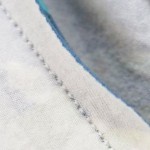
Whether you have a serger or not you need a sewing machine. The main reason is that your serger can’t do proper hems, top stitching, basting and more. The other reason is a serger is meant for finishing edges, not sewing garments. I know others will disagree, but one of the most common complaints I see from those new to sergers OR from customers of boutique shops is seams pulling. I construct all my knit garments on my regular sewing machine.
I use a stretch stitch which is strong, stretches, and gives a nice looking seam as well as topstitching, especially if using nylon thread in the bobbin. Knits will not fray, so raw edges can be left as is or finished with a zig zag stitch if you don’t have a serger. You can also use a twin needle if your machine is compatible, to get a faux cover stitch look when hemming which again stretches well with nylon in the bobbin.
SERGER/OVERLOCKER
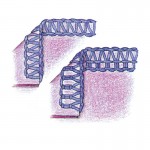
In the US these are most commonly referred to as a serger, but in many parts of the world they are called overlockers. Sergers are designed for finishing edges of fabric and seams, as well as decorative hems such as rolled hems and lettuce edge rolled hems. They cut off access fabric while stitching/wrapping thread around the seam allowance to give it a nice clean finish. This prevents the seams of woven fabrics from fraying as well. Most home sergers are 3 or 4 thread. They do sell 5 thread machines now that also have a single row of chain stitching. 5 thread machines often work well on wovens to skip sewing them with a sewing machine first, but the chain stitch is not always durable enough for high stress points of knits such as the rear curve/rise of knit pants. Most newer sergers also have a differential knob that allows you to adjust the way it feeds the fabric to help prevent your knits from overstretching. Most serger stitch settings naturally allow for stretch.
COVER STITCH MACHINE
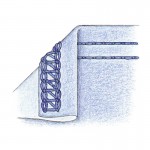
Some higher end sergers actually have cover stitch abilities as well! But if yours doesn’t they sell stand along cover stitch machines to and then you don’t have to fuss with re-threading your serger every time you want to use a cover stitch. Cover stitch machines and stitches are also sometimes called cover-hem or cover-lock depending where you live. They are used for decorative stitching as well as hemming. Like sergers, because of the loopers used to create the underside of the stitches, they are great from hemming knits because they stretch, especially if using nylon in the loopers. The best example I give to people who have never heard of this machine before is to look at the hem of your t-shirt, that is what a cover stitch machine does.
Depending on how many threads it has (mine is has 10!) will depend on how many different stitches it can do, but in general most people use a 2 needle, 3 tread cover stitch in a variation of narrow and wide widths. This machine does NOT cut fabric like a serger and is a specialty machine used for hemming and decorative stitches. While most have a single chain stitch it is not for constructing, just finish work, you must have a regular sewing machine still.
This is what the seams of my knit projects look like, a straight triple stretch stitch for the actual seam, followed by sergering the raw edges to finish it.
Many of my readers already have a sewing machine. One of the most common questions I get asked is what is and affordable serger or cover stitch machine? Honestly if you can afford it I recommend talking to a local dealer, you will get a great warranty and have more choices from quality machines like Pfaff, Elna, Juki and more! That being said I totally understand looking for a solid, affordable starter machine that will last you until you are ready to invest in more. Below are some sergers and cover stitch machines I have heard great things about, many of my friends own and love them. Some of these are affiliate links, but as usual, I only post links to products I myself would purchase.
Sergers



Serger & Cover Hem in 1
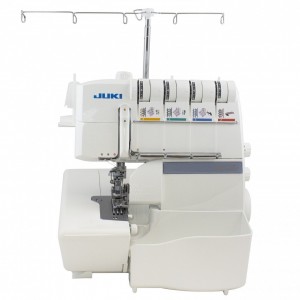
Cover Stitch/Cover Hem Machines


Don’t forget to come back and check out the rest of the series!
Day 1 ~ Knit 101 mini series intro
Day 2 ~ Different types of knits
Day 3 ~ Content & common blends of knits
Day 6 ~ Needles, thread, and machines! (that’s today, right here ![]() )
)
Day 7 ~ Knit Series Round Up, Winners & Knit Tips
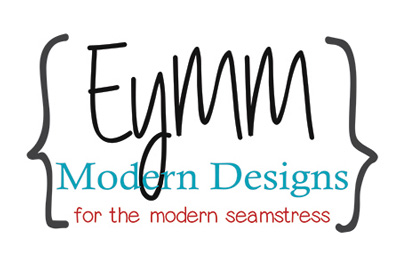

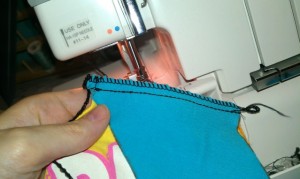
Leave a Reply